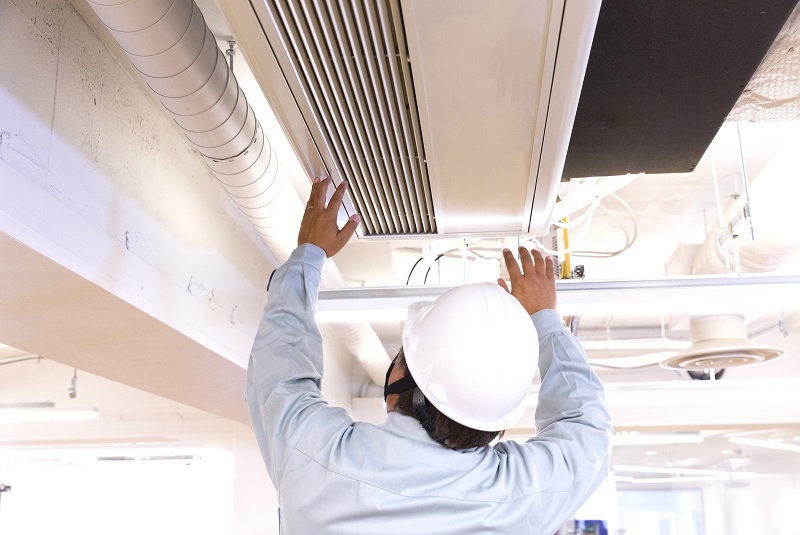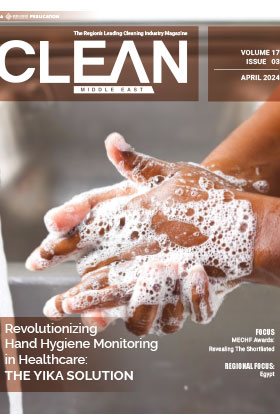Thanks to the efforts of authorities in establishing, implementing, and monitoring codes and compliance requirements, commercial kitchen fires are not as common as other accidents. Nevertheless, when a fire does occur, the damage it causes can be substantial. A shopping mall in our own city remains closed to this very day from a fire that originated in one if its restaurant kitchens 3 years ago. Another recent kitchen fire in a restaurant has left it closed for more than 2 months now. In both cases, the spread of the fire was exacerbated by grease in the kitchen ducts. Even the best-designed, impeccably-constructed, expertly-installed kitchen exhaust systems can fall victim to fires without an ongoing inspection, cleaning and maintenance routine. While some may have the wherewithal to ride out a temporary closure until the facility is restored, a fire often spells permanently closed doors for many.
Grease-laden vapours generated during the cooking process enter exhaust systems, solidifying and accumulating on exposed surfaces, especially inside ducts hidden away above the ceilings. The speed of the accumulation depends on the type and volume of cooking. This grease build-up is the biggest fire hazard in a commercial kitchen. A spark or a flare-up can start a fire inside the duct that spreads quickly within the facility through grease trapped inside, often severely damaging and even destroying the facility completely. Only regular cleaning of kitchen exhaust systems can mitigate this fire risk.
 Local and international standards
Local and international standards
There are both local and international standards for kitchen exhaust maintenance. The most commonly followed international standards are the NFPA® 96: Standard for Ventilation Control and Fire Protection for Commercial Cooking Operations and the ANSI/IKECA C-10: Standard for the Methodology for Cleaning Commercial Kitchen Exhaust Systems. The Building and Engineering Association’s (B&ES) TR/19 Guide to Good Practice, Internal Cleanliness of Ventilation System is also widely used. Dubai Municipality has also issued its own regulation, outlined in TG19: Guideline for Health and Safety in Kitchens and Food Preparation Areas, which Dubai Municipality inspectors regularly visit food preparation facilities to check for compliance against.
Cleaning schedule
The Dubai Municipality Technical Guideline TG19 specifies daily cleaning of cooker surfaces and hoods and weekly cleaning of filters. Ducts and other system components are required to be kept spotless. NFPA® 96 demands that exhaust system components be cleaned to bare metal at frequent intervals prior to surface becoming heavily contaminated with grease or oily sludge. The standard outlines four frequencies for inspections schedules: monthly, quarterly, semi-annually and yearly, depending up on the type and volume of cooking. In the end, it falls on the facility/business owners or managers to ensure timely inspection of the system and determine how often the system should be cleaned, since they are in the best position to understand in mind the relationship between grease build-up and the type/volume of cooking. Timely cleaning of kitchen exhaust system at right intervals helps not only mitigate fire risk, but also protects the facility from smoke, oil leaks, and unpleasant odours. Generally, solid fuel like wood or charcoal cooking, charbroiling and wok cooking, 24 hours kitchens exhaust system require more frequent cleaning.
Are approvals mandatory?
All international standards require that kitchen exhaust system inspection and cleaning be carried out by trained and qualified personnel. The NFPA mandates that cleaning be done only by certified companies or person(s). The IKECA certifies companies and personnel internationally. Kitchen exhaust system cleaning requires a high degree of safety compliance as it involves working at height, moving in narrow confined spaces and working with chemicals. Technicians must be skilled at isolating electrical systems, dismantling and reassembling grease removal systems, identifying and cutting access points, and performing professional, thorough inspections. Vertical duct cleaning requires additional specialized training and skills.
Whose responsibility is it?
Understanding the responsibility of getting ducts cleaned in tenanted facilities, especially multi tenanted ones like shopping malls or airports can be tricky at times. It is important to pin down the responsibility and specify the area and scope in the lease or other agreement in order to avoid confusion and mitigate fire risk. This is especially important when the exhaust system is shared by multiple tenants. Although it would be best for the building owner or the principal lessee (in case of subleasing) to take the responsibility for cleaning so as to ensure better control and monitoring, it is commonly the case that facility owners limit their responsibility to the shared common part of the system and the tenant is responsible for cleaning the part of the system that lies within his leased premises.
Who is liable for loss?
Astonishingly, perhaps due to the rareness of fire incidents, property and outlet owners often neglect the question of liability for losses until a catastrophic event occurs. A fire in a leased property not only destroys the possessions of the lessee, but also those of adjacent occupants and often the property itself. Unless the liable entity has appropriate and adequate insurance coverage, the result is usually protracted litigation and sometimes even permanent closure for the lessee and irrecoverable property loss for the owner of the facility. It is important to determine each party’s liability beforehand and make sure it has the means to compensate in the unfortunate event of a kitchen fire.
Selecting the right operator
According to the NFPA® 96 standard, kitchen exhaust systems must be cleaned by a properly trained, qualified and certified company or person(s). The selection process should ensure that the contractor is capable of cleaning the entire system to bare metal as required by the standard. Because it is not possible for the client’s representative to inspect the entire system after cleaning due to the layout of the ducts and accessibility issues, the selected cleaning contractor must be reliable and trustworthy. Consideration should be given to the contractor’s years of experience, their experience in cleaning vertical ducts, certifications of staff and the company, QHSE management system certification, adequate insurance coverage and testimonials from previous customers.
Why Epsco?
Epsco L.L.C has an impeccable track record of cleaning and maintaining kitchen exhaust systems over the last 25 years. Epsco is certified members of both the IKECA and the NFPA. Epsco’s kitchen exhaust system cleaning technicians are well trained, PECT-certified, and many of them have more than 15 years of experience in the industry. We are ISO 9001, 14001 and 45001 certified and have worked on all types of facilities with a long list of satisfied clients.


.jpg)
 Search
Search



